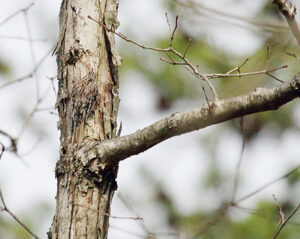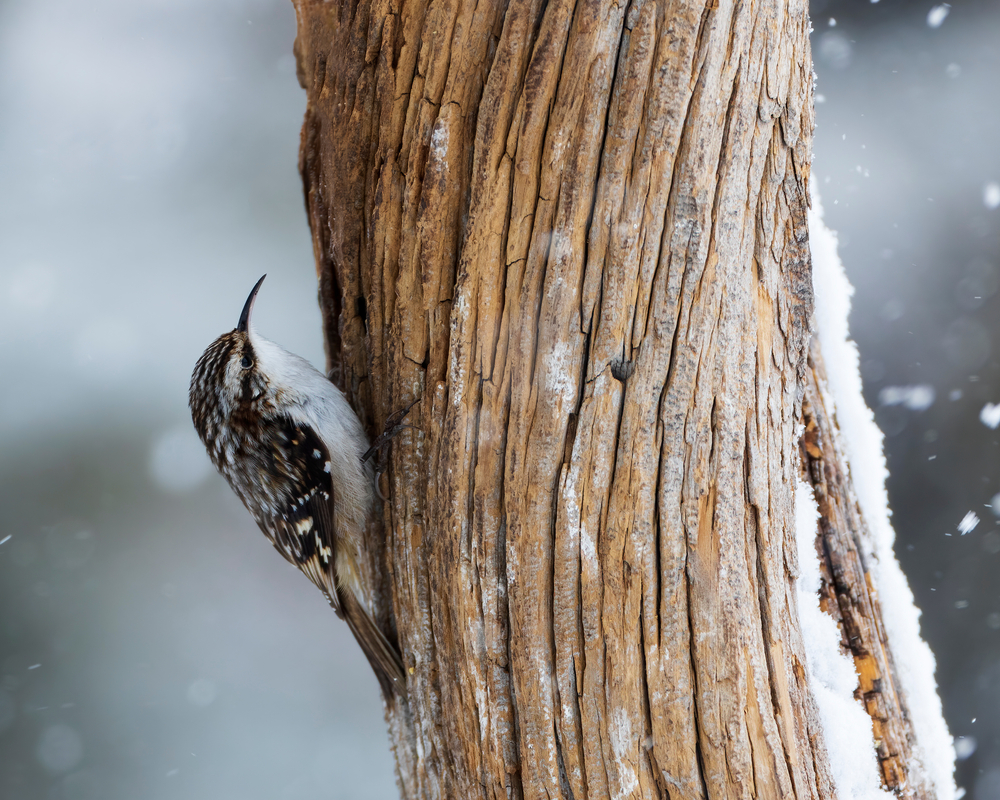Brown Creeper, Certhia americana
Bill Rowe
If you happen to see what appears to be a mouse on a tree trunk, keep looking: if it’s going up the trunk, spiraling around, and then, as it gets near the top, dropping back down to the base of another tree and starting up again, you’re watching a Brown Creeper. What it’s doing, of course, is hunting for its prey, which consists of small insects and their larvae, spiders and their eggs, and any other small life they can locate, plus perhaps some seeds and other plant material; the best sources are larger trees with furrowed bark and/or dead branches. The creeper’s short legs and stiff tail keep it “attached” to the trunk, more or less in the manner of a woodpecker, and its thin decurved bill is perfectly evolved for probing and gleaning. It tends to be an uncommon bird, found in rather small numbers, but it is widespread across North America, with a breeding range that extends throughout the forests of southern Canada and much of the northern U.S. as well as southward in the Appalachians, the Rockies, and other mountain ranges, down into Mexico and Central America. Some of them brave the frigid winters of their northern breeding areas, while others move south to winter all across the rest of the U.S. In Europe, birders can observe two other creepers (the Eurasian and Short-toed Treecreepers) that are extremely similar to ours and to each other, posing one of the toughest identification problems on that continent; and only recent genetic studies have shown that ours is not the same species as either of those two. That’s why ours now has the name americana instead of the name you’ll see in older books, familiaris, formerly shared with the Eurasian Treecreeper.
IDENTIFICATION: No other American bird is like a Brown Creeper, with its unique shape and behavior, and its intricate brown-and-white pattern above and white underparts. The tricky part is noticing it in the first place. Birders whose hearing is still 100% will detect it by its high, thin call, a single-noted “seeee,” with somewhat the same quality as the Golden-crowned Kinglet’s triple “see-see-see.” On the summer breeding grounds, you can also hear its short, warbled song.
ST. LOUIS STATUS: A common migrant in March-April and again in October; these are the best times for seeing one in your yard. Regular but uncommon in the woods in winter; no more than a few per day is par for the course.
Learn more and listen to the songs and calls of Brown Creepers here.


Exploring from below
Photo Credit: Al Smith
Find the bird
Photo Credit: Al Smith




